The Bell Sidetrack II is the 2020 update on the original and wildly popular Bell Sidetrack kids’ helmet. With upgrades to the padding, venting, and strap system, the Sidetrack 2 is both sleeker and more comfortable. It is also now available in three sizes, youth, child and toddler.
With all these updates, the Sidetrack 2 is a tad more expensive than the original, but its quality and durability match its price. Stylized like an adult mountain bike helmet, available in a wide variety of fun colors and designs, and available with MIPS in the Child and Youth sizes, the Bell Sidetrack 2 has many benefits, but we struggled with the toddler size.
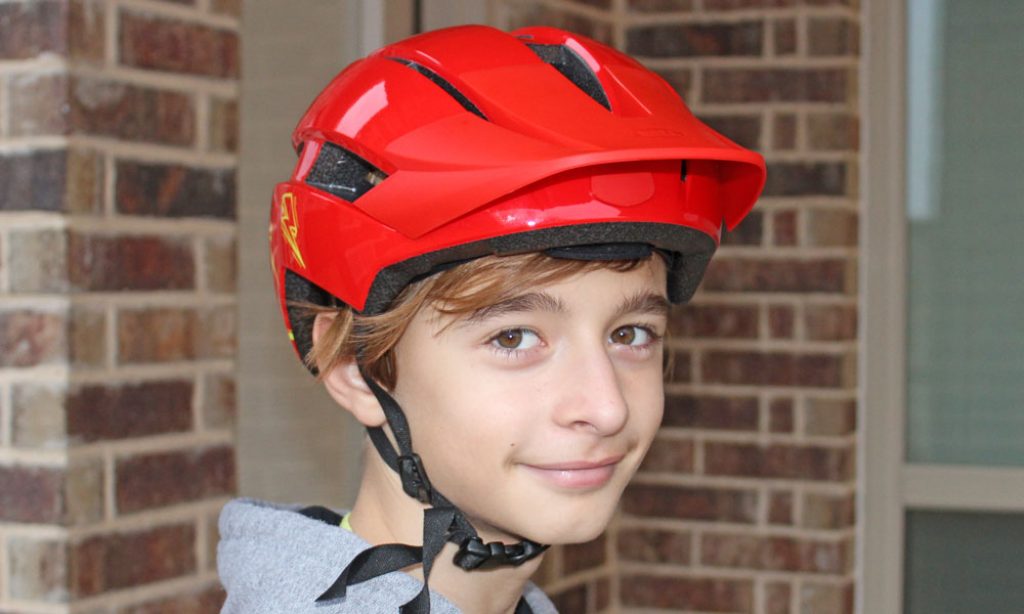
Bell Sidetrack II Overview

RATING: Youth – Highly Recommended, Child – Recommended, Toddler – Not Recommended
MSRP: $70
BEST FOR: Kids with average to tall foreheads that want a mountain bike style helmet
SIZE: Youth (50 – 57 cm), Child (47 – 54 cm), Toddler (45 – 52 cm)
ADJUSTMENT SYSTEM: Dial adjust
MIPS: Yes
PROS:
- Stylized like a mountain bike helmet for an extra cool look
- Sport-performance pads keep sweat away, with extra forehead padding
- Side straps are softer and flatter than the original version
- Plenty of ventilation
- Durable, in-mold construction covers almost all foam
- Tri-glide sliders stay in place better than traditional sliders
CONS:
- The dial adjust is almost impossible to adjust correctly in the toddler size
- The buckle is difficult to figure out and takes some practice (toddler and child sizes)
- The visor comes off too easily
Bell Sidetrack II Helmet – Results of Our Tests
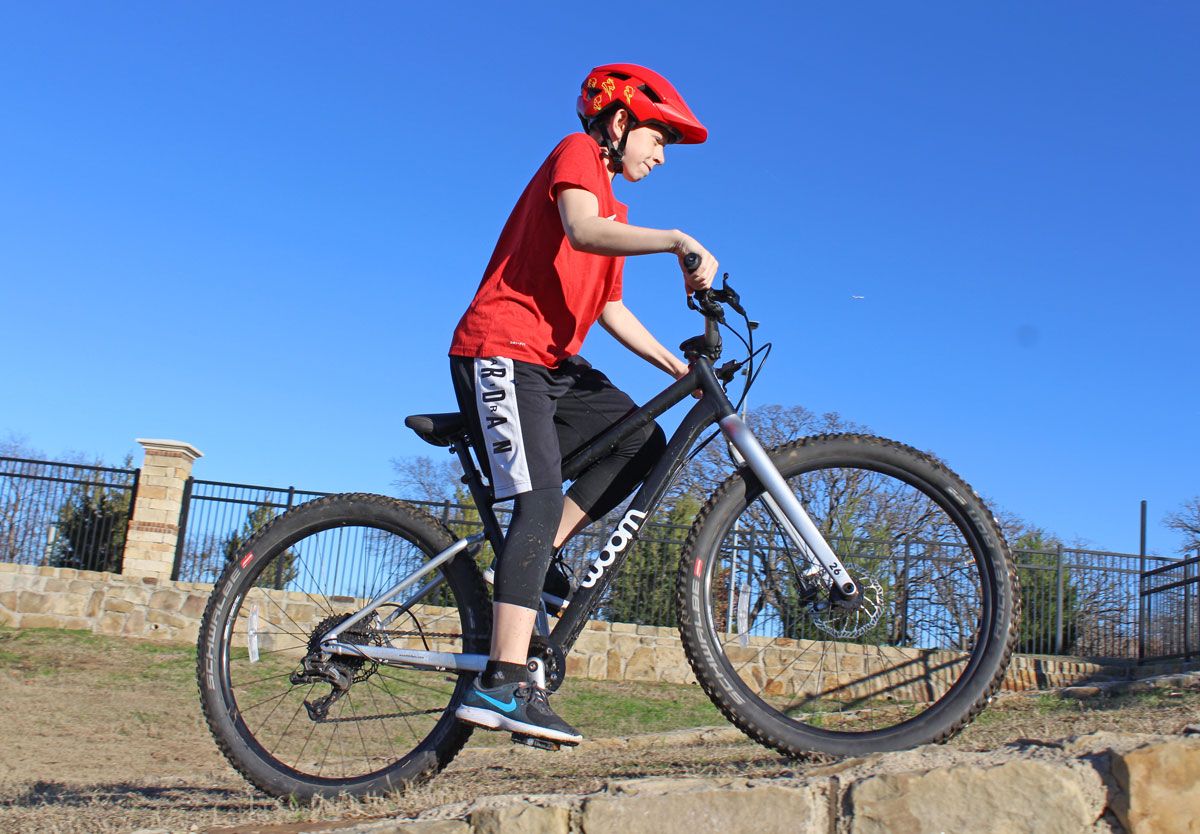
What size Sidetrack is best for my child?
The Sidetrack 2 comes in three sizes – Toddler (45 – 52 cm), Child (47 cm – 54 cm), and Youth (50 – 57 cm). These Sidetrack helmets are unique because there is quite a bit of overlap between the sizes.
Bell Sidetrack II in Toddler, Child, and Youth Sizes

It’s almost always best to buy a helmet that will have more time to grow with your child. For example, if your child’s head is 50 cm, they could wear either the Child or Youth size. But to make the helmet fit for the longest period of time, you should go with the Youth helmet.
The Youth size Sidetrack 2 is a tad deeper than other helmets we recommend, which is a benefit to kids with average or taller foreheads. For kids with shorter foreheads, the helmet may sit too low on their head and actually obstruct their view. You can see this play out in the images below.
On the left is our 9-year-old tester wearing the Sidetrack 2 Youth. It sits low on his eyebrows – too low for a proper fit. Our 12-year-old tester, however, was a fantastic fit for the Sidetrack 2. At the end of the day, helmet fit is about a lot more than just head circumference. Head shape always plays a role as well.
Bell Sidetrack II Youth is Deeper, Best for Average to Tall Foreheads
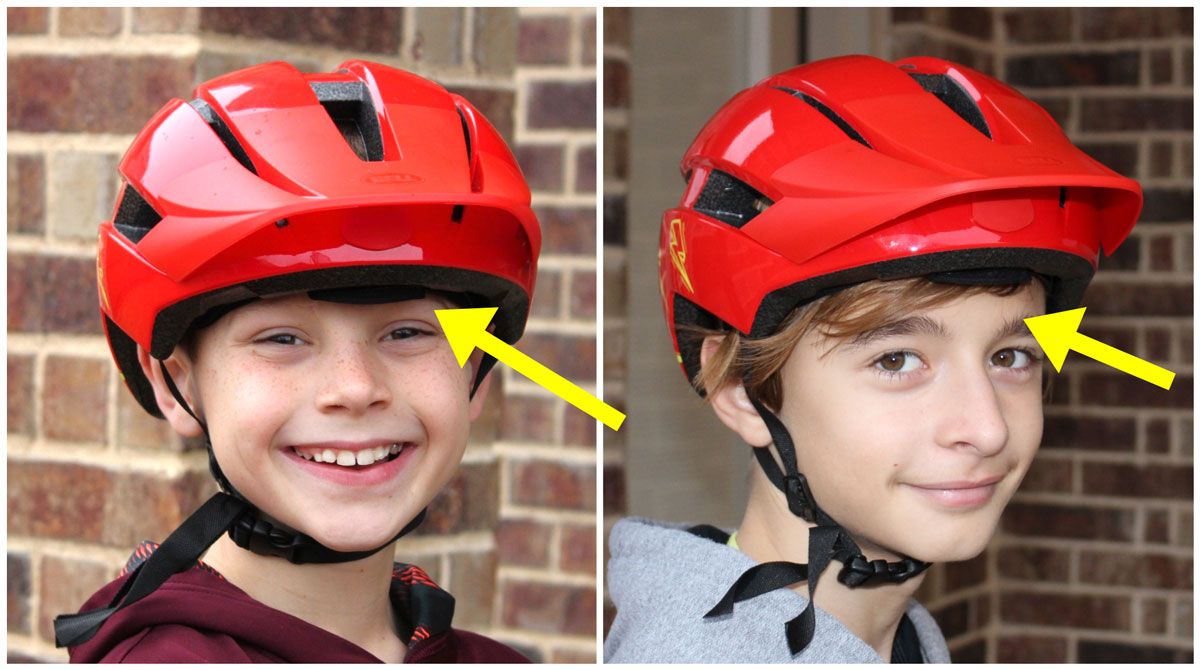
Sidetrack II Adjustability
The Sidetrack 2’s adjustment system was updated from the original models. The side straps (which keep a helmet centered on a child’s head) are now a flatter, smoother material that is less likely to irritate a child’s face. We’re big fans of this upgrade!
Sidetrack II vs. Sidetrack Original – Side Straps

However, the change to the dial adjust design is unfortunately what makes this 2.0 helmet fall short in the Toddler size. It’s less of an issue in the Child size, and not an issue at all with the Youth size.
In theory, the cage and knob system allows a parent or child to simply twist the dial at the back of the head, tightening the internal “cage” of the helmet until it fits snuggly against a child’s head. The placement of the dial on the Sidetrack 2 Toddler is the problem.
As you can see in the image below, it sits very high in the helmet compared to the old Sidetrack. As a result, it’s very difficult to grab the knob with two fingers and you’re forced to try to turn the bottom half of the knob with just one finger. It’s awkward and hurts your finger, and on an impatient and squirming toddler, it proved basically impossible.
Sidetrack II vs. Sidetrack Original – Dial Adjust
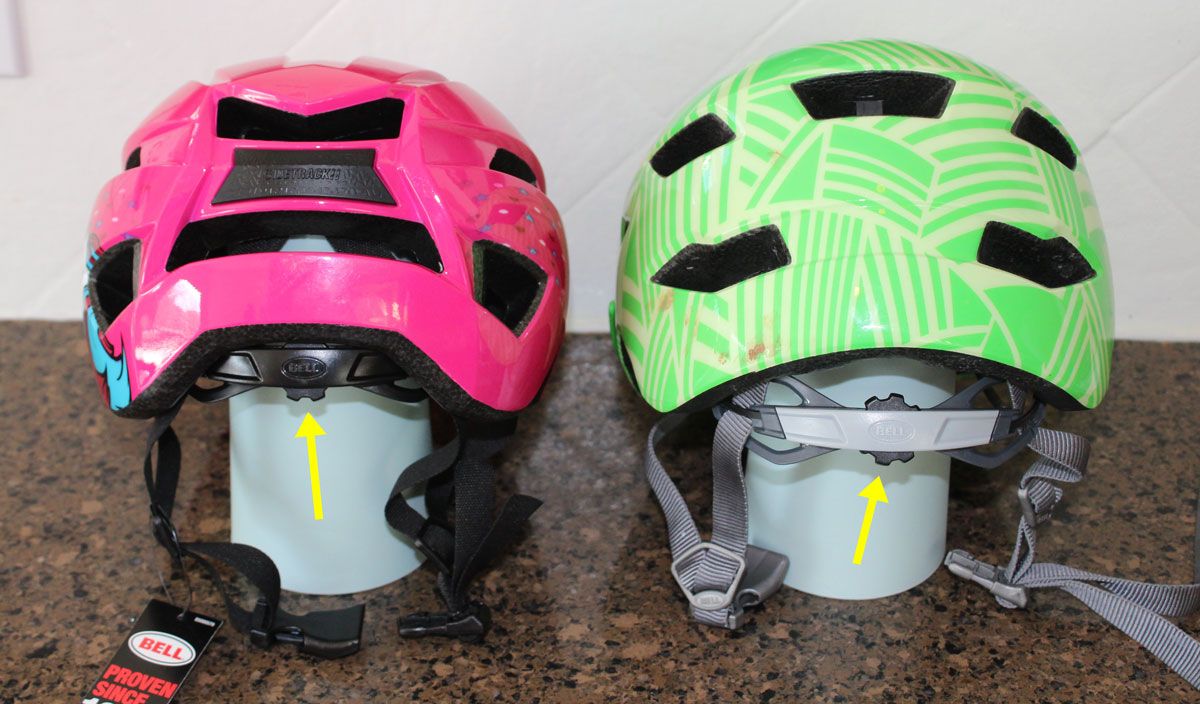
It is possible to grab the entire knob if you pull the plastic cage down, but when doing that, you’re actually pushing the helmet out of place. As a result, it’s basically impossible to tighten the knob while it’s on a toddler’s head.
As a result, it’s very likely that the Sidetrack 2 Toddler will not stay firmly on your child’s head. While I thought I had finally gotten the helmet tight enough, after just a few minutes, the Sidetrack 2 had shifted back and out of place, as you can see below.
Sidetrack II Toddler Shifted Out of Place After Short Ride
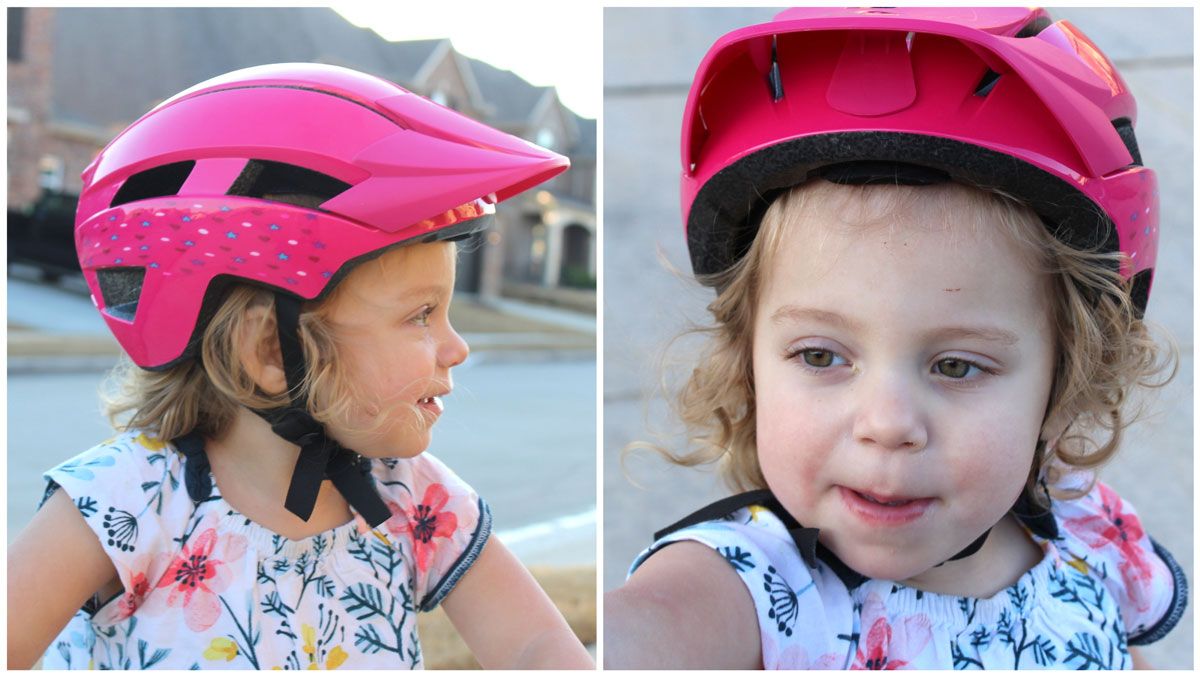
The Child size has the same high-set dial-adjust knob, but it isn’t nearly as difficult to tighten when on your child’s head. The design of the Child size allows you to fit your fingers up inside the back of the helmet to grab the knob. You do have to dig a bit deep, which makes it more frustrating than it should be, though.
In the Child size, the larger the child’s head within the size range, the easier it is to tighten because the dial-adjust knob isn’t set so far back into the cavity of the helmet. For example, on our child with a 51 cm head was easier to put the Sidetrack 2 Child on (47 – 52 cm) than our toddler with a 49 cm head.
Why not just adjust the helmet while it’s off the child? For a few reasons. #1, taking the helmet on and off a child to tighten or loosen the dial is time-consuming and annoying for the parent and the child. It’s also not likely you’ll really get a snug fit that way.
#2, a helmet that is properly tightened should have to be loosened to be removed from a child’s head. Conversely, you can’t tighten a helmet perfectly off the head, because it wouldn’t actually fit on the child’s head when trying to put it on.
A precise, snug, and accurate helmet fit is 100% necessary to keep your child’s head safe in the event of a crash. If the helmet can’t be tightened properly, no side straps, buckle, or MIPS system can compensate for a loose helmet.
For all helmet sizes, the design of the Sidetrack 2’s dial-adjust knob can easily catch on hair (even short boy hair), which will certainly make your kid unhappy with you. (Trust us!) Be careful to tighten slowly.
In a nutshell, we don’t recommend the Toddler size because it’s too hard to tighten for a safe fit. If you love the everything about the Sidetrack 2 and need it in the Child size, be aware that tightening it is a little frustrating, but doable. For kids in either the Toddler or Child size, we recommend the Giro Scamp or Joovy Noodle instead. You can also check out our Best Bike Helmets for Babies & Toddlers list for more toddler size helmet recommendations.
If you need the Youth size, no problem, the dial-adjust is set much lower, as you can see below.
Dial Adjust on Youth Sits Lower
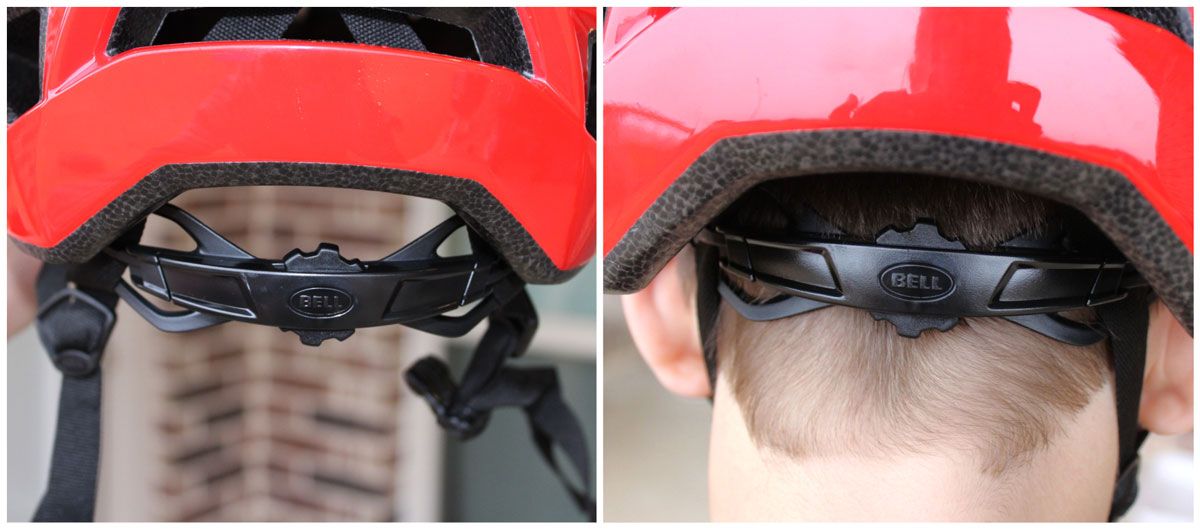
Helmets Pads and Buckle
The pads on the Sidetrack 2 are made from a sweat-wicking, sport performance material with sealed edges. This is an upgrade from the cheaper material used in the original Sidetrack. We also appreciate that the front pad extends over the lip of the front of the helmet. This helps prevent sweat from dripping out and over into your child’s eyes.
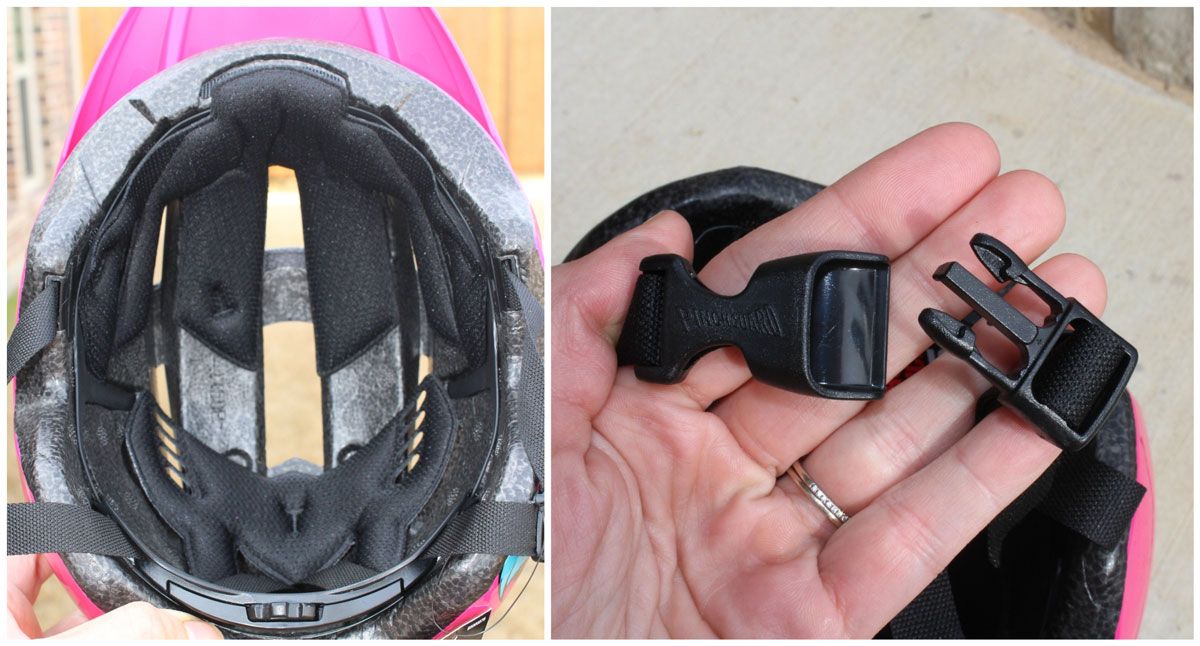
The buckle of the Sidetrack 2 (Toddler and Child) is a slightly modified version of a standard buckle. The receiving-end has a pinch guard that’s supposed to help prevent loose neck skin from getting pinched while buckling.
This design, which is also featured on the original Sidetrack and many other helmets, is not our favorite. We’ve seen a lot of kids have a hard time using it, and I’ve even pinched one of my kids when I tried to help them use it. The Youth size of the Sidetrack 2 has a standard buckle because older kids are less likely to pinch themselves.
Construction, Vents, & Visor
The Sidetrack 2 features in-mold construction where the outer shell is fused with the inner foam core so the helmet is one solid piece. In-mold construction is preferred because these helmets are more durable and won’t crack or warp like cheaper helmets that simply tape a hard plastic shell over the foam helmet core .
As far is in-mold helmets go, the Sidetrack 2 shines because almost every part of the foam is covered with the shell. The less exposed foam, the better, because exposed foam is more likely to get damaged and compromise the integrity of the helmet.

With a shiny finish and more adult-style venting, the Sidetrack 2 is definitely the hipper older sibling of the Sidetrack family.
The visor is another feature that was updated, but not for the better. While the Sidetrack 2’s visor certainly looks cool, it comes off way too easily. Simply hitting it with your hand, or even holding the helmet by the visor, makes the entire visor (or helmet) fall to the floor. Not only will this provide no help in the event of a face plant, but the visor could very easily get lost.
The Youth size helmet is a bit more securely in place than the Toddler or Child sizes.
MIPS Helmet Protection System
The Child and Youth sizes of the Sidetrack 2 come in two versions – with or without MIPS. The original Sidetrack did not have MIPS as an option in the Child size. The Toddler size of the Sidetrack 2 is not available with MIPS.
MIPS (Multi-directional Impact Protection System) allows the energy from the crash impact to be absorbed by the helmet regardless of what direction the impact is coming from. It is considered to be an added layer of safety for child and adult helmets.
The plastic MIPS shell on the Sidetrack 2 is incorporated into the same cage that adjusts to tighten the helmet. This makes the whole system lower profile, and generally doesn’t make a child’s head sweat as much as the older systems that had a more extensive plastic MIPS shell.
While many high-end helmets still have MIPS designs where the yellow MIPS anchors are exposed inside the helmet, the Sidetrack 2’s anchors are covered by the internal pads. Who cares? We promise you’ll care if you have long hair, which almost always gets caught on exposed MIPS anchors!

Bell Sidetrack II Helmet Bottom Line
The high-quality Sidetrack II is beautifully designed for comfort and cool-factor. We love the Youth size, and highly recommend it! Unfortunately, the dial-adjust tightening system is very difficult to use correctly in the Toddler size, and a bit easier to use in the Child size. With so many other helmets to choose from that can be adjusted easily for a safe fit, we recommend the original Sidetrack or selecting a helmet off of our 10 Best Helmets for Kids list for toddlers and young kids.
FTC Disclosure: Affiliate links are included in this review. No monetary compensation was provided for this review. The product reviewed was purchased by Two Wheeling Tots and not supplied by the manufacturer. All opinions and images are that of Two Wheeling Tots LLC. All content and images are copyrighted and should not be used or replicated in any way. View our Terms of Use.
